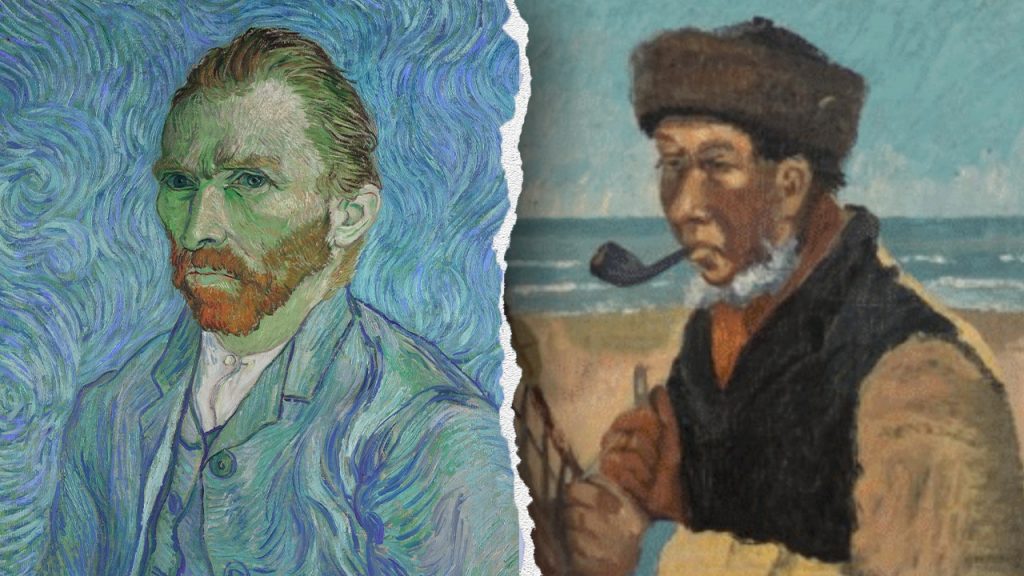The Enigmatic Elimar: A Potential Van Gogh Masterpiece Unearthed at a Garage Sale
The art world is abuzz with the intriguing story of "Elimar," a painting discovered at a Minnesota garage sale in 2016 for a mere $50. LMI Group International, a New York-based art data science firm, believes this unassuming find could be a genuine Vincent van Gogh masterpiece, potentially worth millions. Their conviction stems from a comprehensive 450-page report detailing their investigation, which combines traditional art connoisseurship with cutting-edge scientific analysis. The painting, depicting a somber man with a pipe and fur hat standing by the ocean, bears stylistic hallmarks reminiscent of van Gogh’s self-portraits from 1889. The report suggests it was painted during the artist’s stay at the Saint-Paul sanitarium in Saint-Rémy-de-Provence between May 1889 and May 1890, a tumultuous period in his life.
LMI Group’s analysis highlights several key features pointing towards van Gogh’s authorship. The three-quarter view, distinctive marks under the eyes and at the corners of the mouth, the depiction of eyelashes and the "whites of the eyes" often in blue or green, a pronounced nasal-labial line, and the abbreviated representation of the ear’s tragus and helix all align with van Gogh’s established style. Further strengthening their claim, a strand of red hair partially embedded in the paint was scientifically confirmed to belong to a male, resonating with van Gogh’s own fiery locks. The painting’s finish, made from egg white, is also consistent with the artist’s known practices. The inscription "E L I M A R" on the front of the canvas adds another layer of mystery to the painting’s origin and possible subject.
Despite this compelling evidence, the Van Gogh Museum remains unconvinced. They have officially denied the painting’s attribution to van Gogh based on their own stylistic analysis. This differing opinion creates a fascinating debate, highlighting the complexities and challenges of art authentication, especially for works lacking clear provenance. The museum’s rejection, however, hasn’t deterred LMI Group, who firmly stand by their findings and the rigorous methodology employed in their investigation. The contrasting viewpoints underscore the subjective nature of art interpretation and the ongoing tension between traditional connoisseurship and scientific approaches to authentication.
LMI Group’s investigation into "Elimar" showcases a novel approach to art authentication, combining traditional methods with scientific advancements. This data-driven approach involves meticulous examination of stylistic elements, historical context, and material analysis. The presence of the red hair embedded in the paint, confirmed through scientific testing, adds a compelling biological dimension to the investigation. The use of egg white in the painting’s finish further reinforces the connection to van Gogh’s known techniques. By integrating these diverse lines of evidence, LMI Group aims to establish a new standard of confidence in authenticating unknown or forgotten artworks, potentially revolutionizing the field.
The potential implications of "Elimar" being a genuine van Gogh are significant. Its emergence from obscurity at a garage sale underscores the possibility of undiscovered masterpieces lurking in unexpected places. The painting’s estimated value of up to $15 million highlights the immense financial stakes involved in art authentication. Beyond its monetary worth, the painting offers a potential glimpse into van Gogh’s emotional state during his time at the sanitarium, a period marked by both artistic brilliance and personal turmoil. "Elimar," whether a self-portrait or a portrayal of another individual, could offer valuable insights into the artist’s inner world.
The "Elimar" saga continues to unfold, leaving the art world in anticipation. The conflicting opinions of LMI Group and the Van Gogh Museum highlight the ongoing debate surrounding art authentication and the challenges of definitively attributing works to historical masters. The painting’s potential value, combined with the intriguing circumstances of its discovery, has captivated public attention. Whether or not "Elimar" ultimately gains recognition as a genuine van Gogh, its story underscores the enduring power of art to inspire curiosity, spark debate, and challenge our understanding of artistic creation and historical legacy. The case of "Elimar" serves as a reminder that the art world is full of mysteries waiting to be uncovered, potentially rewriting art history in the process.


